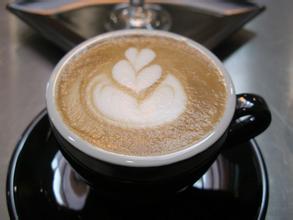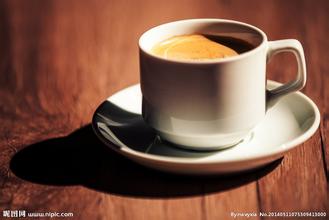Laos coffee is the only deep inland volcanic plateau coffee with a unique, mellow and full-bodied taste.
Boutique coffee (specialty coffee) is also called "specialty coffee" or "select coffee". It refers to coffee made from a small number of raw beans with excellent taste grown in an ideal geographical environment. Depending on the special soil and climatic conditions in which they grow, they have outstanding flavor. After strict selection and classification, this kind of coffee can be regarded as a selection of coffee beans because of its hard texture, rich taste and excellent flavor.

"Laos's special volcanic geology and climate create coffee with excellent flavor." In fact, the coffee beans in Laos are somewhat different from those in other parts of Southeast Asia. It is the only deep inland volcanic plateau that does not depend on the sea, and its special geographical environment is natural. After the fruit turns red, delicate harvest time planning and strict natural sun control are artificially picked to create coffee with excellent flavor. The coffee produced here is unique, mellow and full-bodied, and is favored by consumers. Tasting experts commented on Laos coffee: complex and full-bodied, with the earthy taste of Mantenin, with little sour and bitter taste, different from poor-quality Vietnamese coffee.
Image
Laos is located in the middle reaches of the Mekong River, approximately 1757 °N and 102 °36 °E, separated by a Mekong sandbar from Laos and Thailand. It is a tropical monsoon climate, but the temperature in winter is quite extreme due to topography. The lowest temperature can be as low as 12 degrees Celsius, but it can be as high as 31 degrees Celsius during the day, which is similar to the tropical desert climate.
Coffee in Laos, which dates back to 100 years ago, was introduced by French missionaries and was inextricably linked to geopolitical theory, war and former colonies. At the beginning of the 20th century, France was the colonial ruler of Vietnam, Cambodia and Laos. In order to get a piece of the pie in Laos, France took the lead in introducing Vietnamese coffee beans to the Borrofen Plateau. At that time, because the Borofen Plateau in southern Laos had a special advantage in growing coffee, they began to experiment with growing a variety of crops in these areas, and coffee soon flourished among Vietnamese and Lao farmers.
With the end of the Vietnam War in 1975, many Laotian residents returned to the Borofen Plateau to replant coffee. The Boloven plateau, located in Chambasai province in southwestern Laos, is the coffee kingdom of Laos, where 95% of the country's coffee is produced. The mild climate, moist air and nutrient-rich volcanic soil make the land a paradise for coffee growers, and the land is considered the best place to grow coffee in Southeast Asia.
After nearly a hundred years of development, coffee in Laos has developed well in terms of planting area, production quantity, product quality and so on. Laos coffee beans are mainly exported to France, Germany, Poland and other European countries with large coffee consumption, as well as the United States, Japan and other markets.
The industrial structure of Laos is monotonous, and agriculture is the most important industry in Laos, which is the economic foundation of Laos in terms of production and export trade. Coffee is the most important cash crop in agricultural production. Coffee beans play a very important role in Laos agricultural exports. Before 1988, coffee beans were almost the only agricultural products exported. As of 2007, coffee beans still accounted for more than half of agricultural exports.
Laos coffee is of good quality. According to the French Centre for International Cooperation in Agricultural Research (CIRAD), Laos coffee beans are one of the 12 best in the world. This is because Laos's good natural environment meets the growth requirements of growing coffee, such as high altitude, room temperature, high humidity, good drainage and so on. The Borofen plateau in southern Laos, where coffee is mainly produced, ranges from 500m to 1200 m above sea level, with an average temperature of 8Mur25 degrees Celsius, the soil is almost a natural, pollution-free and chemical-free, high-quality volcanic soil, and this area is the source of many rivers, thus ensuring an abundant supply of clean water in the area. There are 2.5 million hectares of coffee plantations. Farmers do not use pesticides or chemical fertilizers in the process of growing coffee trees, but only use water buffalo droppings to fertilize them, which meets environmental standards and has little pollution. With a mild climate, evenly distributed rainfall, fertile soil and plenty of sunlight, the Borrofen region produces a large number of Arabica and Robusta premium coffee beans. High-quality coffee beans in Laos are marketed in more than 20 countries, with Western Europe and Japan being the largest buyers. Laos coffee is becoming more and more popular in the world, and more and more companies are talking to us about imports. "
For coffee, the main export product, Laos established the National Association of Coffee exporters (AEC) as early as 1994, headquartered in Champas. Somnuck, then general secretary of AEC, said: "AEC's goal is to improve the quality of Lao coffee, open up the international market, bring local and foreign partners together, guarantee the lowest price to growers, provide loans to small farms, seedlings, fertilizers and other materials." Since then, Laos coffee export change system, every company needs to export coffee must go through the association, the association will help them find the market and control prices. The association teaches producers about production technology and finds markets for them to export. Producers will focus on producing and improving the quality of coffee. In order to develop coffee export enterprises and make the most profits, export companies must abide by the rules of the association. So far, 29 companies in AEC export more than 10000 tons of Lao coffee each year, mainly from Shara Bay and Gonghe, the province of Bassai and the other two major coffee-producing provinces.
In the competition with other countries, there are still some problems in the management of coffee exports in Laos, that is, the lack of a set of effective and standard standards for regional management and other aspects of coffee bean cultivation. Hunla Manivon, vice president of the Lao Coffee Export Federation, also said: "Laos lacks a standard system for coffee management." Coffee cultivation in Laos still continues the traditional and natural primary planting mode, although it has received the help of France, but it has not yet applied advanced science and technology to production and processing technology, resulting in less production in some areas. However, there are no strict grade management standards for coffee produced in various regions after post-processing and roasting, resulting in uneven product quality, so that the quality of Lao coffee can not be well developed.
Important Notice :
前街咖啡 FrontStreet Coffee has moved to new addredd:
FrontStreet Coffee Address: 315,Donghua East Road,GuangZhou
Tel:020 38364473
- Prev

Introduction to the flavor of coffee made by roasting and blending first and then blending by two methods of baking
First bake, then spell vs, then bake, boil, match vs Italian, match the target flavor and its related standards, match proportion and cost control, match coffee, the first order of life, for the flexibility of matching and the control of flavor, of course, and the load limit of my current bean roaster, choose to bake first and then spell; brew, Italian, the same to one.
- Next

Are there any other benefits of blending coffee for business besides reducing costs?
Unlike the custom of naming individual coffee after its place of origin, mixed coffee is generally named after the brand or according to the feeling. Like Lipton Black Tea, maybe we drink Lipton for many years but never know exactly what kind of black tea Lipton has mixed together. Brands of blended coffee almost never disclose their recipes, so when we choose blended coffee, we choose it.
Related
- Does Rose Summer choose Blue, Green or Red? Detailed explanation of Rose Summer Coffee plots and Classification in Panamanian Jade Manor
- What is the difference between the origin, producing area, processing plant, cooperative and manor of coffee beans?
- How fine does the espresso powder fit? how to grind the espresso?
- Sca coffee roasting degree color card coffee roasting degree 8 roasting color values what do you mean?
- The practice of lattes: how to make lattes at home
- Introduction to Indonesian Fine Coffee beans-- Java Coffee producing area of Indonesian Arabica Coffee
- How much will the flavor of light and medium roasted rose summer be expressed? What baking level is rose summer suitable for?
- Introduction to the characteristics of washing, sun-drying or wet-planing coffee commonly used in Mantenin, Indonesia
- Price characteristics of Arabica Coffee Bean Starbucks introduction to Manning Coffee Bean Taste producing area Variety Manor
- What is the authentic Yega flavor? What are the flavor characteristics of the really excellent Yejasuffi coffee beans?

